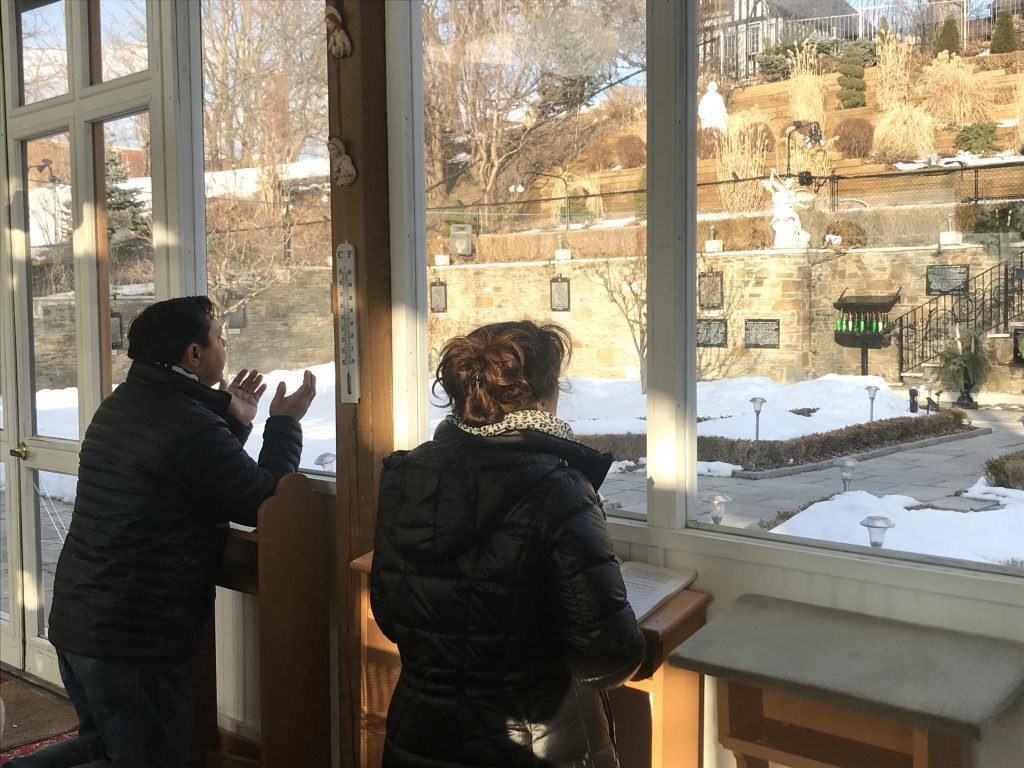By Anastasiya Romanska
Years have gone by and people still recall the woman who was reunited with her estranged daughter here. It was the first miracle reported at The Marian Shrine of Gratitude, but far from the last.
The late Rev. Vasyl Orestes Cembalista told the story best. Over a decade ago, he said to a group gathered for mass, “Let’s say the first rosary prayer. Who has any request to the Mother of God, you can make it now.” He said one lady had a problem with her daughter, who neither answered the phone nor visited her for the last six months, the mother was very worried. “Two minutes after the rosary prayer had been finished the mother’s phone rang. The mother started to cry. The daughter called to ask for forgiveness.”
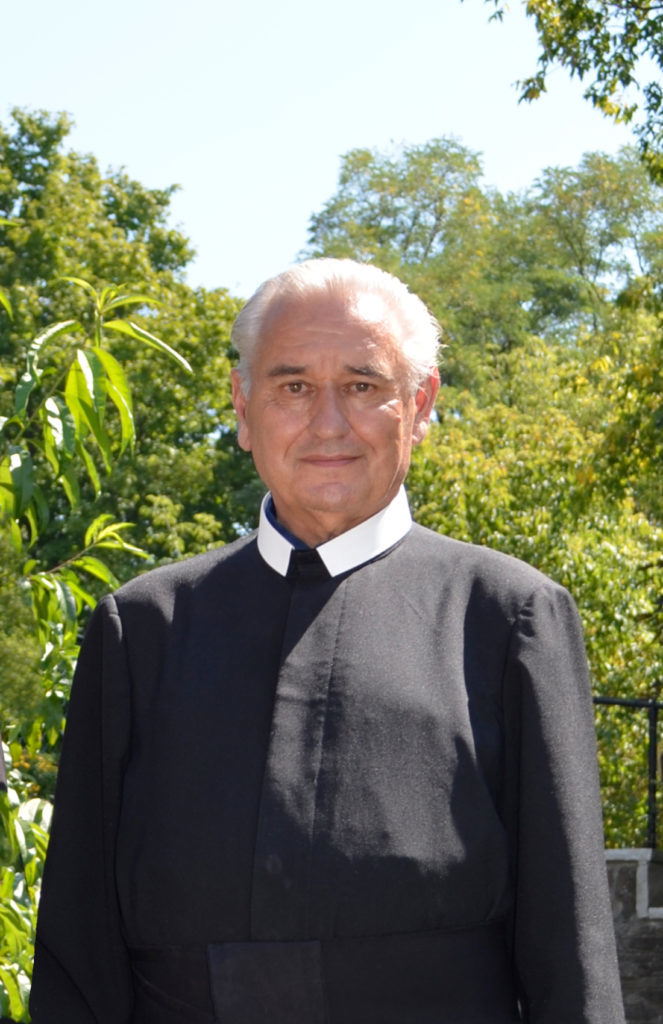
The late Rev. Vasyl Orestes Cembalista pictured before his death in 2018. (The Marian Shrine) 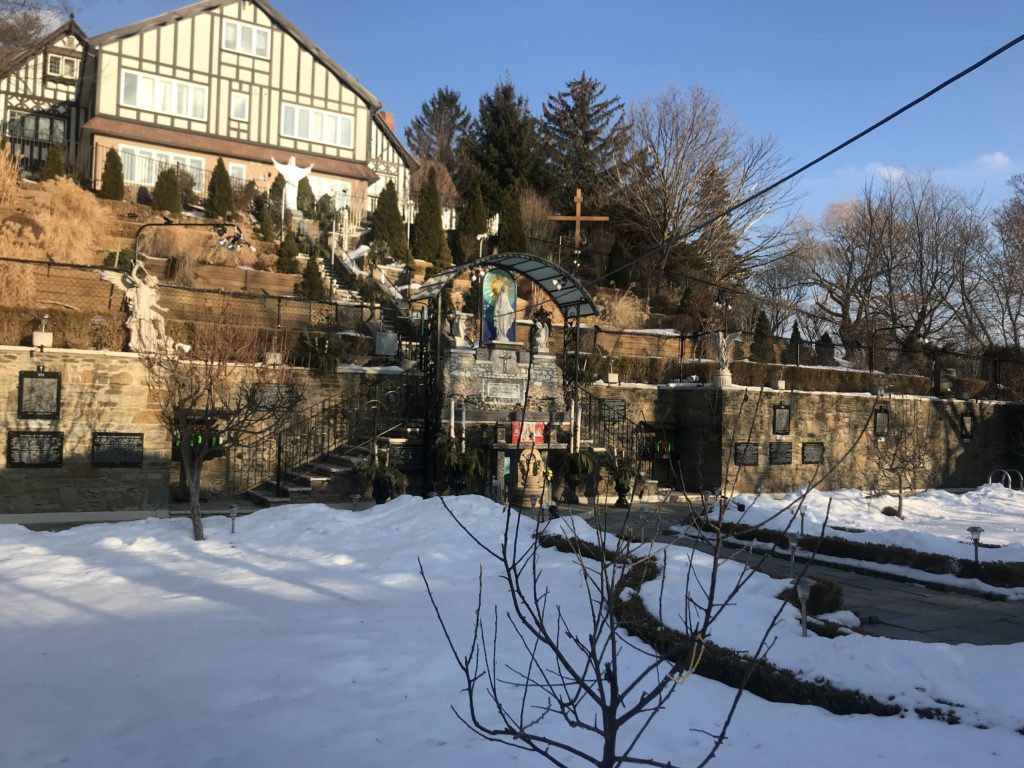
The Marian Shrine of Gratitude pictured on Sunday, Feb. 16, 2020. (Anastasiya Romanska/T•) 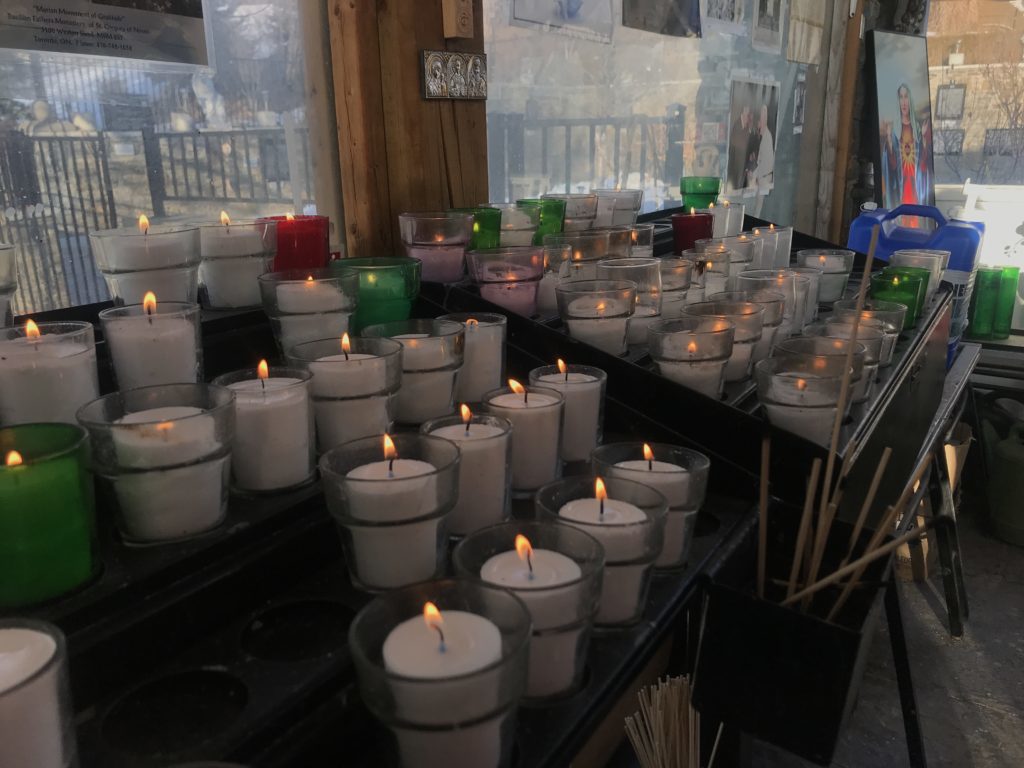
Candles lit by people attending Sunday prayer service on Feb. 16, 2020. (Anastasiya Romanska/T•)
It was from that time on that people started to come, seeking healing and comfort.
“People with cancer came back and said it’s gone. And I’m not talking just a little bit of cancer, I’m talking the fourth stage,” said Angie Carboni, who organizes prayer services at the Shrine. “My mother had colon cancer and it’s gone. She was 85. I asked the blessed mother, please can you not give her chemo because she’ll die, and now she’s 95.”
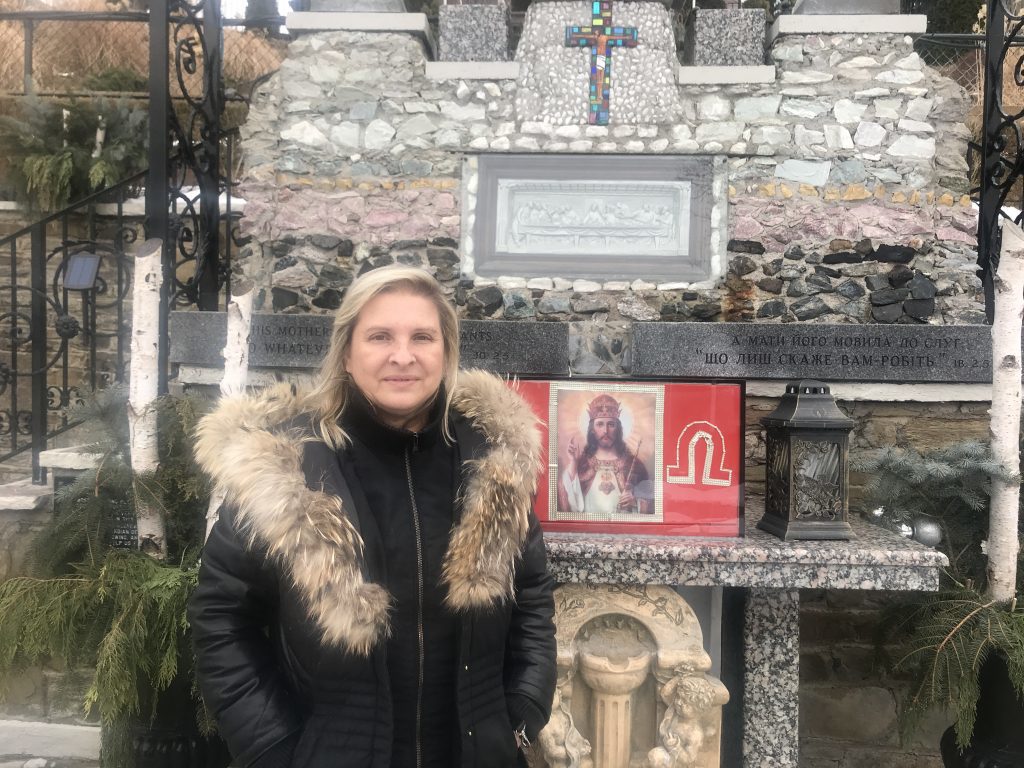
The Shrine, tucked away behind a community centre in northern Etobicoke, is one of the last places you’d expect such a holy place. If you weren’t looking you would miss it, a small fenced off area filled with flowers, candles and holy icons. A small pavilion is often filled with people praying; a place hidden away from the harsh winter wind. Inside you can find seats, church pews, bibles and even more candles. At the bottom of a grassy hill stands a statue of Mother Mary, surrounded by a garden which comes alive with an array of flowers in the summer. The sun shines on the Shrine as birds chirp overhead. The smell of roses fills the entire area, along with hints of burning candle wax. You would never guess that the beautiful garden is in the place of a former swimming pool. But without this pool, the Shrine may have never come to be.
The late Rev. Vasyl Cembalista was cleaning the pool previously located on the property on Oct. 4, 2004, when a dry branch hit and punctured his eye. He exclaimed “Mother of God save my eye.” After going to the doctor he was told it was a miracle he could still see. Then when he returned home his wound healed completely. “Before that for 13 years I wore triple lens glasses – for distance, for reading, and for computer work,” he said. But after the accident he lived with perfect vision until his death.
The Reverend—as Shrine followers call him instead of the usual ‘Father’, never expected that this Shrine would be so popular. “He was so touched he just wanted to make a little place where he could pray and celebrate mass, but it turned into so much more,” said Angie.
The Reverend began hosting weekly masses, people started telling their friends and soon it wasn’t uncommon to have hundreds of people gather at the Shrine for prayer. During winter months, prayer services are held on Sundays, but when the weather’s nicer in the summer, you can expect them multiple times a week.
On a warm winter Sunday afternoon the sun can be seen shining through the glass of the covered pavilion. People of all ages are gathered inside, singing hymns in unison. It comes out so naturally you’d think they were a well-oiled choir group. The youngest, a five-year-old, sits cross-legged, while a grandmother well into her 80s holds his hand. Everyone has a look of peace across their face, eyes softened, the corners of their mouths turned into the smallest of smiles. Some are standing, some kneeling, all with their hands clasped, head down, praying to God.
Although official masses are no longer held here, people still gather for prayer services every week. After the death of the Father, the Order of Saint Basil the Great in Canada, who owns the property, threatened to close the Shrine altogether.
In response the community came together. In 2016, over 5000 people signed a petition. There were tens of testimonials, claiming how the Shrine performed miracles.
Nadia Rosati, a young woman who has been a frequent visitor to the Shrine for years, credits the Shrine for her survival of cancer. She was one of the members who gave a video testimony when the Shrine was under threat. “It’s very sad because this place is comfort for a lot of people. Many people come here to feel at peace. They come here because they feel a connection to God here, they feel the presence, I feel the presence. So I know that them closing this is going to disappoint a lot of people, including myself,” she said.
Despite the hardships that the Shrine has experienced throughout the years, people continue to return to pray and find comfort from their faith. Angie and Stanislaw Sokolyk, the gardener, work tirelessly and remain positive about the future of the Shrine.
Although they still do not have permission from the Order to host mass, the petitions allowed the Shrine to remain open for prayer services and individual worship.
Angie says no matter what happens she intends to do everything in her power to keep this place running. “So many people talk bad about the [Catholic] church. There are bad apples in every bunch of every kind of walk of life. But there are good ones too,” she says.
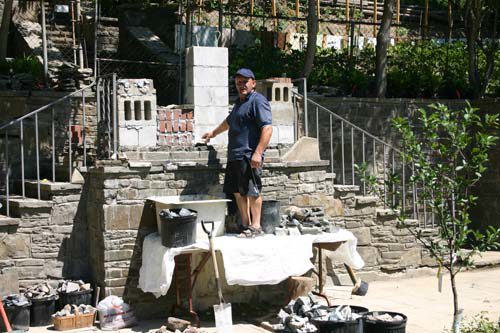
Stanislaw Sokolyk begins the construction of the pedestal for the statue of the Mother of God in 2005. (The Marian Shrine) 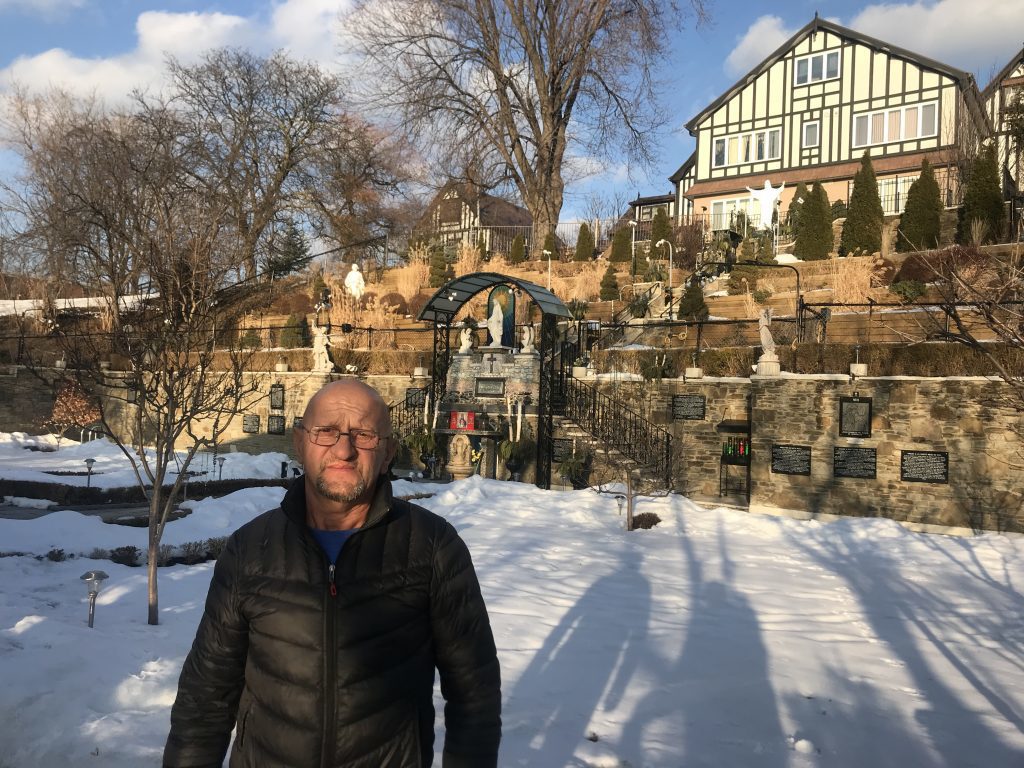
Stanislaw Sokolyk standing in front of the Shrine he helped build, on Feb. 16, 2020. (Anastasiya Romanska/T•)
Whether you come here for a walk, a prayer or a plea for help, the Shrine is open 24/7, says Stanislaw with pride in his voice. “Nobody wants to destroy this place, in all of our years not a single act of vandalism has been committed.” The only place people write on is the prayer book. A small notebook placed inside the pavilion has its pages filled with messages to God and Mother Mary. They’re all in different languages: English, Ukrainian, Chinese, Polish – a true testament to just how diverse the community is.
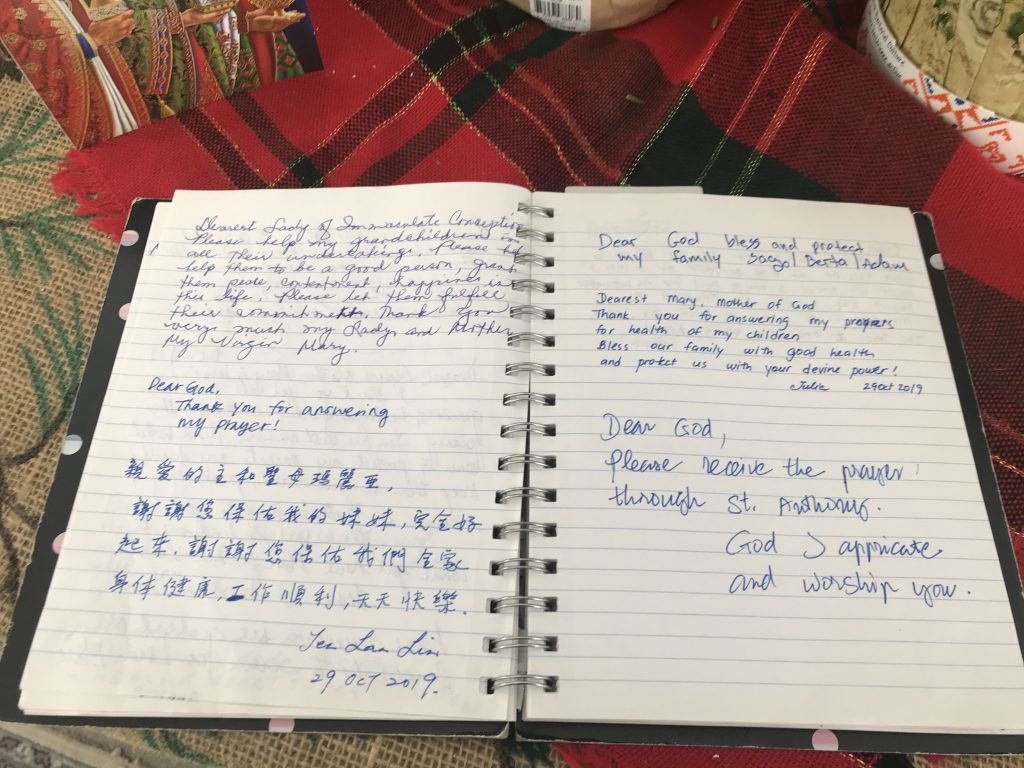
People from all over, regardless of their background, come together in peace. Angie describes coming here as “feeling the touch of heaven.” “It’s here,” she said, “That’s what it is, a little bit of heaven in the city. And this city needs it.”


